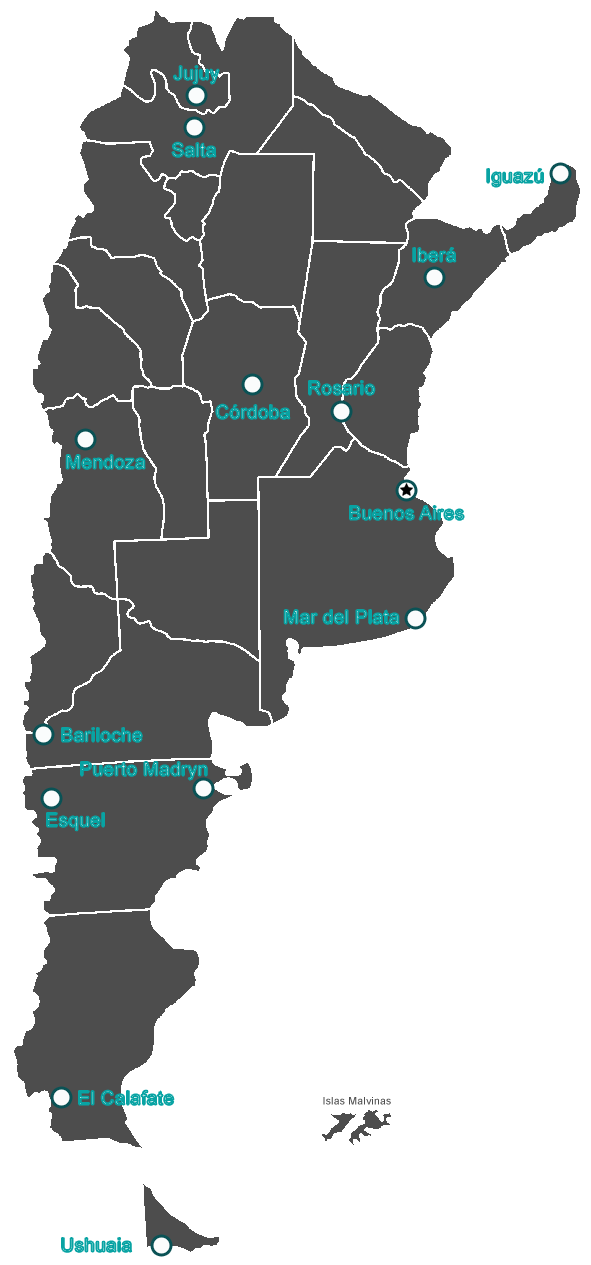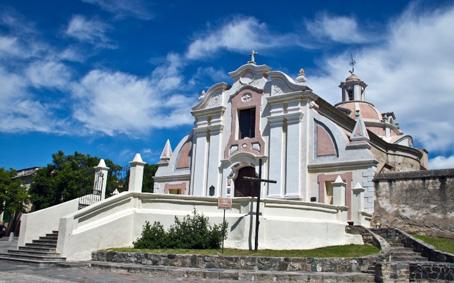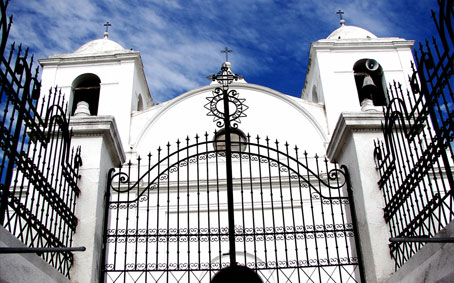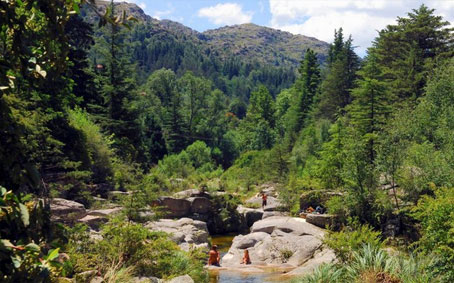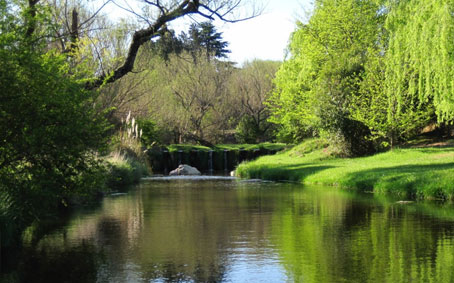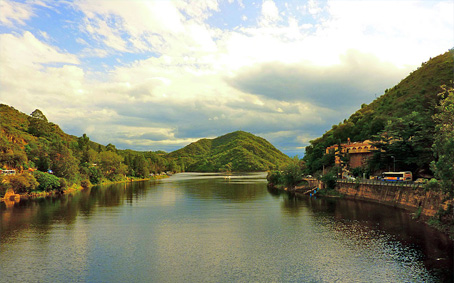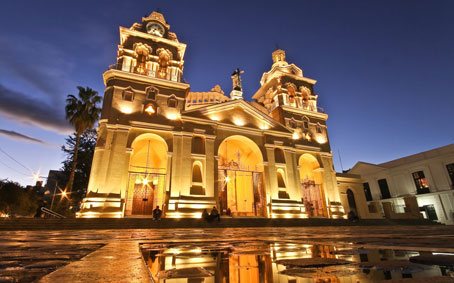Argentina . Córdoba
Pasaporte: cualquier persona que ingrese a Argentina debe tener un pasaporte con validez de por lo menos de seis meses a partir de la fecha de entrada, e idealmente después de la fecha en que el titular del pasaporte abandona el país.
** MUY IMPORTANTE: TODOS LOS PASAJEROS DEBEN VIAJAR CON EL PASAPORTE INFORMADO AL MOMENTO DE LA RESERVA **
Visados: Canadá, Australia, Nueva Zelanda y la mayoría de los países de Europa occidental no necesitan visa para visitar Argentina: al momento del arribo la mayoría de los visitantes obtienen un sellado de 90 días en su pasaporte. Sin embargo los canadienses –por ejemplo- deben pagar una "tarifa de reciprocidad" significativa antes de llegar. Idealmente se lo indicarán al comprar el boleto de avión: esta tarifa es igual a lo que se cobra a los argentinos por las visas para visitar esos países. La tarifa se paga online y con tarjeta de crédito.
Regulaciones aduaneras: los artículos electrónicos (computadoras portátiles, cámaras y teléfonos celulares) se pueden ingresar al país sin impuestos, siempre que no estén destinados a la reventa. De tener muchos equipos, se recomienda llevar la lista con los números de serie y preferentemente los recibos de compra.
Electricidad: la corriente eléctrica de Argentina opera a 220V, 50Hz, las clavijas y enchufes son del tipo C/I. Los adaptadores están disponibles en casi cualquier “ferretería”. La mayoría de los equipos electrónicos (como cámaras, teléfonos y computadoras) tienen doble voltaje / multitensión, pero algunos equipos podrían requerir un convertidor de voltaje para evitar cortocircuitos.
Acceso a Internet: la conexión inalámbrica a internet (Wi-fi) está disponible en la mayoría de los hoteles, cafés, restaurantes y aeropuertos y es generalmente buena y gratuita. En lugares remotos como El Chaltén y otras partes de la Patagonia, el servicio de Wi-fi puede ser generalmente pobre.
Teléfonos móviles: lo mejor es traer el propio teléfono celular GSM de tri o cuatribanda desbloqueado a Argentina y luego comprar un chip SIM económico (obtendrá un número local) y créditos (o carga virtual) según sea necesario. Todas las tarjetas SIM ahora deben estar registradas para que los usuarios puedan activarlas. En teoría, un extranjero puede activar una tarjeta SIM con identificación. Tanto los chips de SIM como los créditos se pueden comprar en muchos quioscos o locutorios.
Dinero: los cajeros automáticos están ampliamente disponibles y se aceptan tarjetas de crédito en la mayoría de los hoteles y restaurantes. Los cajeros automáticos también se pueden usar para adelantos en efectivo en las principales tarjetas de crédito (no todas las tarjetas extranjeras funcionan en cajeros automáticos). Son la mejor manera de obtener dinero y casi todos tienen instrucciones en inglés. Los límites de retiro pueden ser muy bajos, aunque la tarifa de retiro puede ser relativamente alta. Los cajeros automáticos de Banelco tienden a permitir grandes retiros; pero en algunos lugares de la Patagonia (El Calafate y El Chaltén, por ejemplo) y en los principales centros turísticos se quedan rápidamente sin efectivo en temporada alta.
Efectivo: la unidad monetaria de la Argentina es el peso (AR$). Los billetes vienen en denominaciones de 10, 20, 50, 100, 200, 500, 1.000, 2.000, 10.000 y 20.000 pesos. Un peso equivale a 100 centavos y las monedas vienen en denominaciones de 10, 25 y 50 centavos, así como 1, 2, 5 y 10 pesos. Actualmente, los dólares estadounidenses son aceptados por muchas empresas dedicadas al turismo, pero siempre se recomienda llevar algunos pesos.
Tarjetas de crédito: muchos (pero no todos) los servicios turísticos, grandes tiendas, hoteles y restaurantes -especialmente en las grandes ciudades- aceptan tarjetas de crédito. Las más aceptadas son Visa y MasterCard, aunque American Express y algunas otras son válidas en algunos establecimientos. Importante: muchos lugares brindan un pequeño descuento si se paga en efectivo en lugar de usar una tarjeta de crédito.
Cambio de divisas: los dólares estadounidenses son, con mucho, la moneda extranjera preferida, aunque los pesos chilenos y uruguayos se pueden cambiar fácilmente en las fronteras. Los dólares en efectivo y los euros pueden cambiarse en los bancos y en las "casas de cambios" en las ciudades más grandes, pero otras monedas pueden ser difíciles de cambiar fuera de Buenos Aires. Se necesita pasaporte para cambiar dinero; recomendamos encarecidamente evitar cualquier tipo de cambio de dinero callejero.
Propinas: restaurantes y cafés, es habitual dar una propina equivalente al 10% de la factura. Spa, el 15% de la factura. Para personal del hotel, los repartidores, los porteros de hoteles y autobuses y los taxistas: se estila entregar unos billetes.
Horarios comerciales:
Bancos de 10 a 15 hs de lunes a viernes.
Bares de 19 / 21 hs hasta 4 / 6 hs cada noche.
Cafés de 6 hs a medianoche o mucho más tarde; abierto todos los días.
Clubes de 1 / 2 hs a 6 / 8 hs viernes y sábado.
Horario de oficina 9 hs a 18 hs.
Restaurantes del mediodía a las 15.30 hs y de las 20 hs a la medianoche ó 1 hs (más tarde los fines de semana)
Tiendas de 9 / 10 hs a 20 / 21 hs lunes a sábado.
Cuando se habla de Argentina, inevitablemente aparecen en la imaginación los gauchos y el tango, pero lo que realmente cautiva a muchos viajeros son sus bellezas naturales. La variedad de sus paisajes cubre desde los desiertos más septentrionales a la cordillera de los Andes en el sur; desde las cataratas de Iguazú a la desolada Patagonia. Y, por encima de todo, se alza Buenos Aires: la capital, una magnífica ciudad que puede sorprender tanto por su elegancia como por su cultura neo-europea. De hecho, la característica más reveladora del elevado número de población inmigrante es comprobar cómo los rasgos de la cultura europea se han mantenido intactos durante su adaptación al denominado Nuevo Mundo.
Es el octavo país más grande del mundo y el segundo de esta parte del continente americano. Limita al oeste con Chile, separado por la cordillera de los Andes, y al norte y este, con Uruguay, Paraguay, Brasil y Bolivia, separados por diferentes ríos. Además comparte Tierra de Fuego con Chile y continúa disputando la soberanía de las Islas Malvinas y la del territorio Antártico, donde tiene instaladas varias bases científicas, entre ellas la más famosa: Marambio.
La topografía Argentina está condicionada tanto por la latitud como por la altitud; por ello, ofrece un mosaico de paisajes de lo más diverso. El país puede dividirse en cuatro grandes provincias geográficas: los Andes, al oeste, con áridas cuencas, laderas repletas de viñedos, montañas, glaciares y el Distrito de los lagos; los Fértiles Valles, al norte, con selvas subtropicales; la Pampa central, mezcla de extensiones húmedas y secas; y la Patagonia, al sur, mixtura de estepas y regiones glaciares.
Población: 46 millones de habitantes (CENSO 2022)
Capital: Buenos Aires
Etnias: 85% blancos, 15% mestizos, indígenas y otras minorías
Idioma: español, y 17 lenguas indígenas
Religión: 93% católicos romanos; 2,5% protestantes; 2% judíos; 1,5% católicos ucranianos; 1% ortodoxos armenios
